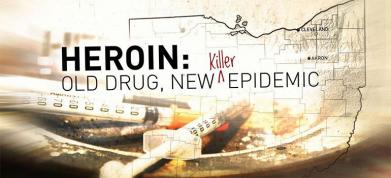N.J. Heroin-Related Deaths Rise for 4th Straight Year, Up 155% Since 2010

Harm Reduction
911 Good Samaritan Law
Naloxone
Overdose Prevention
Current Trends in Drug Abuse
United States Drug Use Trends and Statistics
Overdose Mortality Data
Overview
Originally Published: 06/12/2015
Post Date: 06/13/2015
Source Publication: Click here
Similar Articles: See the similar article
Summary/Abstract
At least 781 people died of heroin-related overdoses in New Jersey in 2014, marking the fourth straight year the total has increased, new state data show. The grim tally is a more than 155 percent increase in deaths attributed to heroin since 2010 as the state remains gripped in a burgeoning drug abuse crisis.
Content
The data show that Middlesex, Monmouth, Bergen and Passaic Counties were hit the hardest by overdose deaths in 2014, each seeing an increase of 25 percent or more in deaths from the previous year. The data also show that hundreds more died from prescription drug overdoses, a sign that they remain a significant problem for New Jersey despite significant efforts to curb overprescribing.
The figures come amid a flurry of activity from both the state legislature and law enforcement in recent years to try to curb the use of heroin and prescription opioids, the use of which has exploded among New Jersey's youth over the last decade.
Last fall, Sen. Joseph Vitale (D-Middlesex) introduced a package of 21 bills in hopes of bolstering oversight, education and resources to fight addiction in New Jersey, some of which have passed the legislature. A hotline administered by Rutgers University that would connect drug abusers to treatment facilities is expected to open in July. And Gov. Chris Christie has made fighting heroin and opioid abuse a priority, recently negotiating a discounted price for anti-overdose drug naloxone, which was deployed to all law enforcement agencies last year.
Still, overdose figures continue to climb in New Jersey. Data show that heroin-related overdoses caused 225 more deaths in the state last year than car accidents.
Steven Marcus, director of the New Jersey Poison Control Center, said the actual figures could be much higher.
"These are just the deaths we know about," Marcus said. "We have terrible surveillance of the issue ... We tend not to lend too much time to worrying about the drug abuser. Things are changing a little bit, certainly from the top with the support of the governor here in New Jersey, but we still aren't anywhere close to solving the problem of drug abuse. From where I sit, it's frustrating."
Not surprisingly, demand for substance abuse treatment among heroin abusers has been soaring in New Jersey, recently released data show. But many treatment facilities have waiting lists dozens of people long, frustrating many seeking help.
The success of naloxone, also known as Narcan, presents its own red flags, experts say. When administered properly, Narcan can reverse the effects of an overdose by clearing and capping the body's opioid receptors, which can halt the repressed breathing patterns that cause the vast majority of deaths.
It's been a boon for law enforcement in many areas. In Ocean County, the meteoric rise in heroin-related deaths was halted from 2013 to 2014 after Narcan was successfully administered 129 times.
In 2015 alone, it has been deployed 128 times, according to Al Della Fave, spokesman for the County Prosecutor's Office.
"It's the finger in the dike that just keeps on giving," Della Fave said. "It's not very reassuring, of course, because it shows that we're still in a crisis."
That's the problem with Narcan. While its life-saving capacity is not in question, it does little to address addiction itself and reveals how widespread drug abuse is. While Ocean County has started a program to connect overdose victims to treatment, it remains the only of its kind in New Jersey and is still just a pilot program.
Narcan has been deployed more than 1,000 times since last year, according to Christie's office. Those figures are a compilation of law enforcement and emergency officials and do not include hospitals, which have been using naloxone for years.
"The fact that someone felt the need to use it that many times — that's very significant," said Marcus. "Regardless of whether they lived or died, these people are overdosing. And that's just police. When you include the use of this by medical facilities it could be two to three times that, and that's a huge number."





